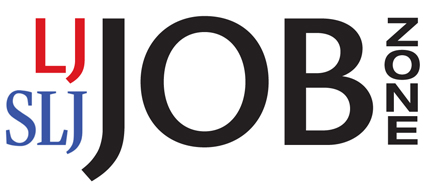Reference: Explore Young Adults Across the Decades With New Interactive Data Tool From U.S. Census
Direct to New Interactive Data Explorer
From the U.S. Census:
Young adults today, often called the millennial generation, are more likely to be foreign born and speak a language other than English at home, compared with young adults in 1980, according to the U.S. Census Bureau’s latest statistics from the American Community Survey released today.
“Many of the differences between generations examined within these latest data reflect long-term demographic and societal changes,” said Jonathan Vespa, a Census Bureau demographer. “Three decades of decennial census statistics combined with the latest American Community Survey statistics give us a unique view of how — and where — our nation is changing. In this case, we can look at the changing characteristics of young adults over the last few decades.”
The 73 million young adults currently 18 to 34 years old, often referred to as millennials, comprised the largest such population in the last three decades. Nonetheless, their share of the population is actually smaller today than in 1980, when the young adult population included the baby boomers born between1946 and 1964. The baby boom is distinguished by a dramatic increase in birth rates following World War II and comprises one of the largest generations in U.S. history.
In 1980, 30 percent of the population was age 18 to 34, compared with 23 percent today.
The percentage of young adults today who are foreign born has more than doubled since 1980 (15 percent versus 6 percent).
All states have higher proportions of foreign-born young adults than 30 years ago.
The increase was larger in the West and Northeast, where 21 percent and 18 percent, respectively, are now foreign born, compared with 12 percent and 8 percent 30 years ago.
Only 9 percent of young adults in the Midwest and 14 percent in the South are foreign born, up from 3 and 4 percent, respectively, in 1980.
One in four young adults, or 17.9 million, speaks a language other than English at home. That proportion is higher still in New York, New Jersey, Texas, New Mexico and Nevada (where it is about one in three) but is highest in California (where it is about one in two).
More millennials are living in poverty today, and they have lower rates of employment, compared with their counterparts in 1980:
One in five young adults lives in poverty (13.5 million people), up from one in seven (8.4 million people) in 1980.
Today, 65 percent of young adults are employed, down from 69 percent in 1980.
Prior generations of young adults were more likely to have ever served in the armed services: 9 percent were veterans in 1980, compared with 2 percent today.
Millennials are more educated than young adults in 1980:
22 percent have a college degree, up from 16 percent in 1980. States with the largest share of young college graduates are in the Northeast, including Massachusetts, New York and New Jersey.
Unlike in prior generations, the majority of millennials have never been married, reflecting continued delays in getting married:
Only about three in 10 young adults have ever been married, down from six in 10 in 1980.
The state with the highest share of married young adults is Utah (51 percent); the lowest is Rhode Island (25 percent).
Some things have not changed:
Young adults continue to rely on a car to get to work: about eight in 10 drive to work, which is largely unchanged compared with 1980. Alabama has the highest share (95 percent); New York has the lowest (53 percent).
Note that the Census Bureau does not define generational terms beyond “baby boom generation.” The term “millennial” is used here only to reference the 18-34 age range used in Census Bureau statistics.
Access the Data: The Young Adults Then and Now Interactive Data Explorer
Young Adults: Then and Now looks at socioeconomic characteristics of 18- to 34-year-olds using the 2009-2013 American Community Survey and the 2000, 1990 and 1980 Censuses. The interactive data tool has estimates for the national, state, metropolitan, county and neighborhood (census tract) level.
Topics include:
Demographic
Total population
Percent non-Hispanic white alone
Percent minority (Note: “Minority” refers to people who reported their ethnicity and race as a group other than non-Hispanic white alone)
Earnings
Year-round, full-time median earnings
Poverty
Percent living in poverty
Labor Force
Percent employed
Foreign Born
Percent foreign born
Education
Percent with a bachelor’s degree or higher
Veterans:
Percent veterans
Language:
Percent language other than English spoken at home
Family
Percent never married
Percent living in their parents’ home
Percent living alone
Commuting
Percent of workers who drove or carpooled
Note: All of the data that’s used in the interactive tool can be easily downloaded in either XLS or CSV formats. Additionally, all charts, tables, and graphs can be embedded.
Filed under: Data Files, News
About Gary Price
Gary Price (gprice@gmail.com) is a librarian, writer, consultant, and frequent conference speaker based in the Washington D.C. metro area. He earned his MLIS degree from Wayne State University in Detroit. Price has won several awards including the SLA Innovations in Technology Award and Alumnus of the Year from the Wayne St. University Library and Information Science Program. From 2006-2009 he was Director of Online Information Services at Ask.com.


